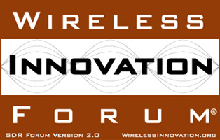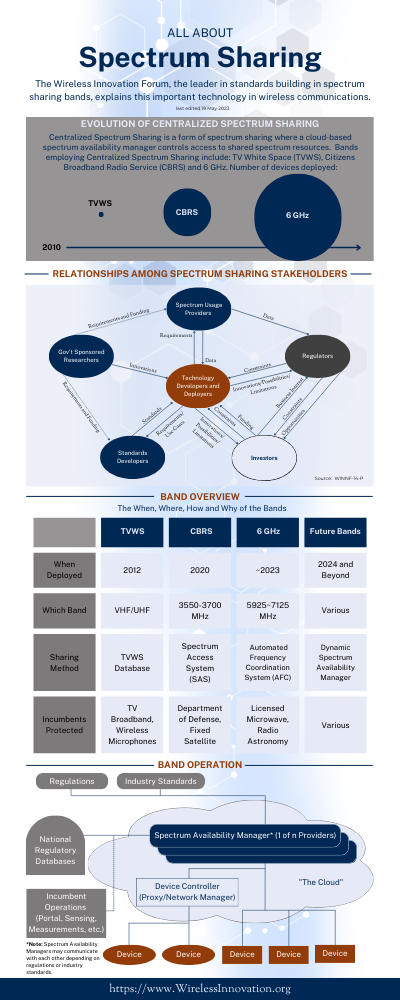- Home
- Knowledge Center
- Reports, Recommendations and Specifications
- Information Documents
- All About Spectrum Sharing Infographic
- Free Webinars
- Tech Talks
- Setting the Standard Video Blog
- Beyond the Radio Dial Video Blog
- Conference Proceedings
- Workshop Proceedings
- Springer Journals
- Market Studies
- What is the SCA?
- Issue Submissions
- Reference Implementations
- What is SDR?
- What are CR and DSA?
- About Us
- Events
- News
- Projects & Committees
- Members
- Join the Forum
Wireless Innovation Forum Top Ten Most Wanted InnovationsInnovation #1: Dynamic Spectrum Management1.1 Executive SummaryThe realization of a fully Dynamic Spectrum Management (DSM) system powered by cognitive network technology and supported by collaborative intelligent radios[1] is considered a future vision for DSM. In the next decade, it is anticipated that the spectrum management ecosystem will experience a paradigm shift by relying extensively on spectrum knowledge (which will leverage the application of data science (e.g. machine learning and data mining) to spectrum and related data) to perform proactive dynamic spectrum management in order to optimize spectrum utilization and foresee spectrum demand. Ultimately, a DSM system will be capable of adapting its prediction and decision-making through machine learning, in order to capture changes and adapt to the RF environment and related spectrum usage parameters. DSM design paradigms must evolve to demonstrate elements of the paradigm shift by integrating spectrum knowledge as a core function in spectrum management; possibly leading to new and innovative spectrum management strategies and enhancing existing spectrum management strategies. One can envision a long term outcome to spectrum management where a combination of different types of services could dynamically share large portions of pooled spectrum, and further down the road the whole spectrum, in order to maximize spectrum usage efficiency. [1] Paul Tilghman, DARPA, Invited Talk: Spectrum sharing through collaborative autonomy, Sep 25, 2017, VTC Fall 2017 Toronto 1.2 ApplicationMaximizing spectrum usage efficiency based on knowledge will benefit a broad range of user communities including:
New DSM functions such as flexible licensing, including real-time spectrum monetization with real-time auctions and dynamic spectrum assignment of the licenses, could also be considered as part of the DSM evolution going forward and would benefit regulators and brokers. 1.3 DescriptionThe dynamic spectrum management is enabled by several core technologies:
Taken together these technologies can enable wireless devices and networks to coordinate access to spectrum among themselves by sharing information on the spectrum environment, prioritizing new spectrum demands (e.g. emergency access), and protecting the priority access of legacy systems (e.g. military radar). Ultimately, dynamic spectrum management could include local information processing (e.g. machine learning algorithms residing on the cognitive radios), as well as cloud management, to create an ecosystem where the cognitive radios could coexist seamlessly without a need for human intervention / licensing. |



